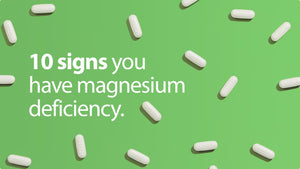 In a knock down, drag out battle for supremacy, bugs are batting 1,000 and humans are back in the dugout. The discovery of penicillin in 1929 has long been considered one of the most significant medical advances in human history. Bacterial infections ranging from pneumonia to staphylococcus to tuberculosis, once nearly universally fatal, could be easily treated and usually cured.
In a knock down, drag out battle for supremacy, bugs are batting 1,000 and humans are back in the dugout. The discovery of penicillin in 1929 has long been considered one of the most significant medical advances in human history. Bacterial infections ranging from pneumonia to staphylococcus to tuberculosis, once nearly universally fatal, could be easily treated and usually cured.
Penicillin and a rapidly developing pharmacopeia of newer generation antibiotics became the panacea of the ‘50s and ‘60s. Every cough and sniffle was treated with antibiotics. For a time, the development of new antibiotics kept pace with the innate intelligence of the bacteria they were designed to kill. Fast forward a decade or two and scientists began to notice antibiotic-resistant strains of bacteria. However, discovery of these resistant strains didn’t seem to set off the alarm bells in the medical community that one might expect.
Antibiotics In Our Food
Instead, farming conglomerates got into the act and began adding prodigious quantities of antibiotics to animal feed. The livestock industry uses an astounding 25 million pounds of antibiotics, 92% of it to promote growth, prevent disease and counter unsanitary conditions on farms and to ease the stress of shipping animals, according to Dr. Mathias Egger, a British researcher who has intensively studied the U.S. antibiotic problem. Only 2 million pounds are used for specific animal infections, the only appropriate use of these drugs.
Low concentrations of antibiotics are now measurable in nearly all of our animal-based foods and are seeping into rivers and streams from animal feed, finding their way inexorably into our water supply. And while human antibiotic use has diminished somewhat, strains of resistant bacteria are evolving faster than new ones can be developed. In the past two decades hardly any new antibiotic groups have been discovered to try to trick these wily bugs.
More than 3 million pounds of antibiotics are prescribed for human use in the United States each year. Given a population of 284 million Americans, this means every man, woman and child in the U.S. gets 10 teaspoons of pure antibiotics each year.
Overuse of antibiotics has resulted in food-borne bacterial infections resistant to antibiotics. Salmonella is found in 20% of ground meat, but constant exposure of cattle to antibiotics has made salmonella resistant to at least one anti-salmonella antibiotic. Diseased animal products account for 80% of salmonellosis in humans or 1.4 million cases a year. Salmonellosis is not just an intestinal infection, it can damage the joints and the heart, creating chronic illness.
The conventional approach to this epidemic is to irradiate food in an attempt to kill the organisms, but farmers keep using antibiotics that cause the original problem instead of learning to keep the animals healthy naturally.
Approximately 20% of all chickens sold in the U.S. are contaminated with the Campylobacter jejuni bacteria, causing 2.4 million human cases of illness annually. Of these organisms, 54% are resistant to at least one anti-campylobacter antimicrobial drug.
Resistant Strains Multiply Rampantly
Worldwide, a new antibiotic resistant strain of tuberculosis is causing concern is the scientific community, particularly since the contagious disease is making an insidious comeback. The Public Health Research Institute has analyzed strains of tuberculosis that resist as many as nine antibiotics. Thanks in part to jet planes, resistant tuberculosis has spread from New York to Colorado, Florida, Nevada and even to France.
Resistant bacterial strains are also evolving rapidly. A Swiss study published in the New England Journal of Medicine showed that no strains of the common intestinal bacteria Escherichia coli resisted antibiotics in a study period from 1983 to 1999. But between 1991 and 1993, 28% of all strains of E coli tested were resistant to all five antibiotics in the fluoroquinolone class.
Perhaps worst of all, bacteria are actually smarter than we are; they learn from our mistakes. Once a bacterial strain develops resistance, all of its offspring are also resistant. And epidemiologists say when bacteria are exposed to antibiotics, they are under “selective pressure” that allows only resistant forms to survive and reproduce.
Overprescription
The Centers for Disease Control (CDC) has warned doctors and patients that 90% of upper respiratory infections, including children’s ear infections, are caused by viruses, which are not affected by antibiotics.
There is only one type of sore throat-causing bacteria -- group A beta-hemolytic streptococci – that requires antibiotics. Penicillin and erythromycin are the only recommended treatments.
Nevertheless, one study which surveyed 6.7 million adult visits to the doctor between 1989 and 1999 in which the patient complained of sore throat found that antibiotics were prescribed in 73% of cases. Even worse, patients treated with antibiotics were given non-recommended broad spectrum antibiotics in 68% of these visits.
The CDC has also determined that 40% of the 50 million prescriptions issued by physicians’ offices each year for colds and flus are inappropriate. In 1995, Richard Besser, M.D., a pediatric and medical epidemiologist at the CDC, said 20 million unnecessary prescriptions for antibiotics were issued. Eight years later, in 2003, Dr. Besser said there are “tens of millions” of unnecessary antibiotic prescriptions issued annually. This government body also says that using antibiotics when they are not needed can lead to the development of more resistant strains of bacteria that cause more than 88,000 deaths a year due to hospital-acquired infections. Twenty million unnecessary prescriptions for colds and flus does not take into account the millions of prescriptions issued unnecessarily each year for conditions such as acne, intestinal infections, skin infections and ear infections – non-life threatening conditions that are only marginally affected by antibiotics.
Allergy to penicillin is also fairly common, and while the reaction is treatable if it’s caught in time, thousands suffer and 400 Americans die each year from anaphylactic reactions.
It goes without saying, but I’ll say it anyway: We must stop using antibiotics unnecessarily. Antibiotics have their place in cases of serious infection. They must be saved for these cases or infectious disease will once again become major killers. Antibiotic overuse has another insidious effect: destroying the healthy balance of bacteria in the gastrointestinal tract. Antibiotic literally means ‘against life.’ Broad spectrum antibiotics destroy all bacteria in the digestive tract, the ones that may (or may not) be causing a problem and the ones that are vital to the digestive process and to immune function.
If the healthy balance of microorganisms is not restored, yeast, especially Candida albicans, can multiply to fill in the gap. In the intestines, at a certain critical amount in its budding form, yeast changes into an invasive form that digs into mucus membranes from nose to anus. Candida does not necessarily invade the blood stream—unless someone is on long-term IV antibiotics. Candida, however, has over 179 different toxic waste products and byproducts that are related to systemic problems ranging from endometriosis to headaches, PMS, psoriasis and more. You can find out more about Candida and related conditions at www.yeastconnection.com.
Anyone who takes antibiotics for any reasons can and should restore healthy microbial balance by taking a good quality probiotic. For more information on probiotics go to: www.yeastconnection.com.
The CDC’s "Solution”
The CDC is now, erroneously, I think, targeting consumers in a $1.6 million advertising campaign called “Get Smart: Know When Antibiotics Work.” The campaign, intended to educate patients about the overuse and inappropriate use of antibiotics, is misdirected. After all, antibiotics must be prescribed by a medical professional. Doctors should know how to prescribe these medications properly and should refuse to issue inappropriate prescriptions and use the opportunity to educate their patients who request inappropriate antibiotic prescriptions.
Dr. Besser has responded to this suggestion by saying, “Programs that have just targeted physicians have not worked. Direct-to-consumer advertising of drugs is to blame in some cases.” Dr. Besser also suggests that the Get Smart campaign will help patients feel more comfortable about asking their doctors for the best care for their illnesses rather than asking for antibiotics.
And what exactly is the “best care” for colds and flu that run rampant this time of the year? Dr. Besser does not elaborate and the CDC pointedly avoids the latest research on dozens of nutraceuticals scientifically proven to treat viral infections and boost the immune system.
Fortunately, the public is waking up to the many solutions for staying healthy. Remember, those ‘solutions’ include, saving antibiotics for times when you really need them and if you must take them, be sure to take a probiotic supplement to rebuild normal intestinal flora. Also, it is important to use stevia* instead of sugar to discourage yeast overgrowth.
* As a physician, I have found that reducing sugar intake is one of the most important things you can do for your health. Reduce your sugar intake by supplementing your tea, water, and other beverages with Stevia.
Dr. Carolyn Dean, M.D., N.D.
Proficient in both conventional and alternative medicine, Dr. Dean offers private consultations by phone. If you require individualization of the advice offered in this article, you can contact Dr. Dean at www.drcarolyndean.com or by email at help@drcarolyndean.com.
Dr. Dean graduated from medical school in 1978 and holds a medical license in California. She is also a graduate of the Ontario Naturopathic College, now the Canadian College of Naturopathic Medicine, where she sat on the Board of Governors for six years.
Dr. Dean is an expert in difficult to diagnose conditions such as digestive and intestinal disorders (IBS); hormone imbalance and estrogen dominance; and yeast overgrowth as evidenced by four of her books, IBS for DUMMIES, Hormone Balance, and The Yeast Connection and Women’s Health. Another of Dr. Dean’s areas of expertise is magnesium. In her recent book, The Magnesium Miracle she uncovers evidence of magnesium deficiency in 22 health conditions including heart disease, arthritis, PMS, chronic fatigue syndrome and fibromyalgia. Dr. Dean is able to advise what types of magnesium are best suited for these conditions.
Dr. Dean has authored a total of 18 books to share her extensive knowledge in both traditional and alternative medicine. These titles include Natural Prescriptions for Common Ailments, Menopause Naturally, Homeopathic Remedies for Children's Common Ailments, The Miracle of Magnesium, Everything Alzheimer's, Hormone Balance, The Yeast Connection and Women’s Health, IBS for Dummies, Death by Modern Medicine, The Complete Natural Medicine Guide to Women’s Health, Solve it With Supplements, and The Magnesium Miracle.






















